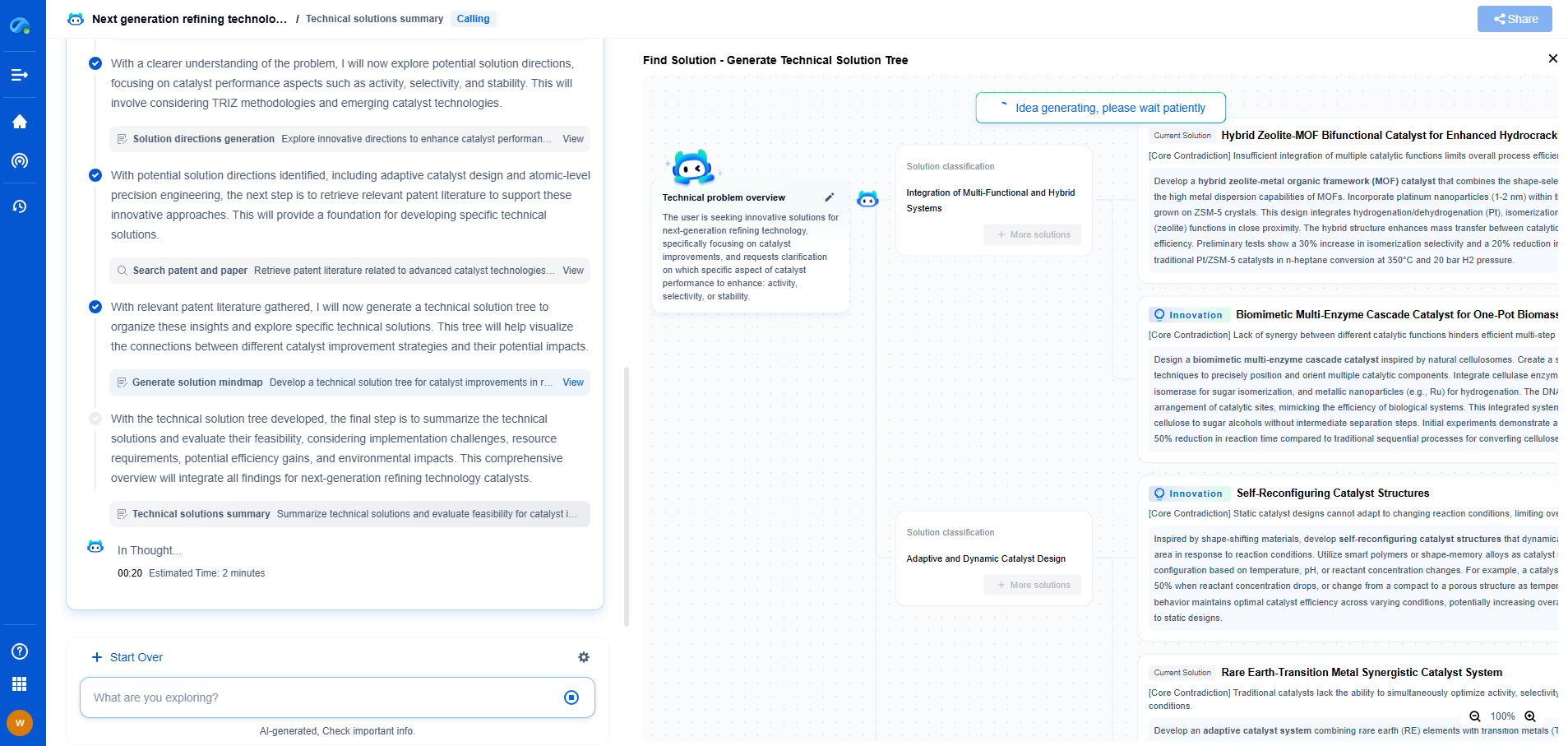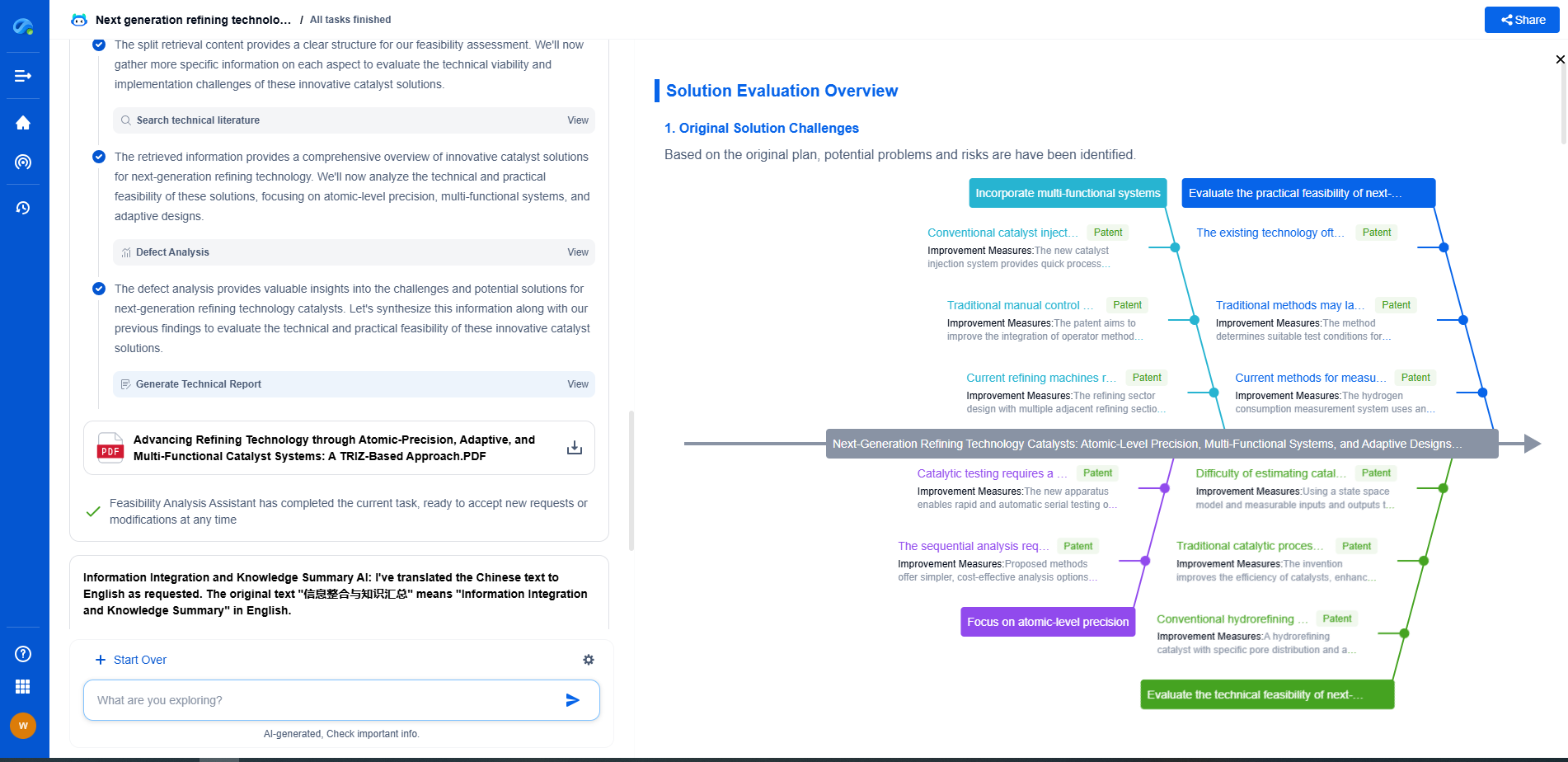AI Solutions for Voltage and Frequency Regulation
JUN 26, 2025 |
In the rapidly evolving landscape of power systems, maintaining the stability of voltage and frequency is crucial for ensuring the reliability and efficiency of electricity supply. With the integration of renewable energy sources and the increasing complexity of modern grids, traditional methods for voltage and frequency regulation are being supplemented—and in some cases, replaced—by advanced artificial intelligence (AI) solutions. This article explores how AI technologies are being utilized to enhance voltage and frequency regulation in power systems.
AI in Voltage Regulation
Voltage regulation is essential for ensuring that electrical equipment operates within its specified voltage range. Traditional voltage regulation techniques often rely on mechanical processes and fixed algorithms, which can struggle to cope with the dynamic nature of modern power grids. AI provides several advantages in this domain:
Predictive Analytics: AI can analyze historical data and predict future voltage levels, allowing operators to proactively adjust system parameters. Machine learning algorithms can learn patterns in voltage fluctuations and identify potential issues before they occur.
Real-time Monitoring and Control: AI systems can process vast amounts of data in real time, enabling more responsive and accurate voltage regulation. Neural networks and other AI models can optimize voltage levels based on real-time measurements, ensuring stability across the grid.
Integration with Renewable Energy: AI can facilitate the integration of renewable energy sources, which are known for their variability. By predicting the output of solar panels or wind turbines, AI systems can adjust voltage levels to accommodate fluctuations in renewable energy production.
AI in Frequency Regulation
Frequency regulation is crucial for maintaining the balance between power supply and demand. Any deviation from the standard frequency can lead to equipment malfunction or grid instability. AI offers several solutions for effective frequency regulation:
Load Forecasting: AI algorithms can predict power demand with high accuracy, allowing grid operators to adjust generation levels in advance. This helps maintain a stable frequency and reduces the need for emergency interventions.
Automated Response Systems: AI can automate the response to frequency deviations, activating reserve power sources or shedding non-essential loads to quickly restore balance. Such automated systems can react more swiftly than human operators, enhancing overall grid stability.
Optimization of Energy Storage: Energy storage systems play a vital role in frequency regulation. AI can optimize the charging and discharging cycles of batteries to ensure they are used efficiently for frequency control. This optimization can prolong battery life and improve the economic viability of storage systems.
The Role of AI in Smart Grids
The concept of smart grids relies heavily on AI for managing and regulating voltage and frequency. Smart grids are designed to be more adaptable, efficient, and sustainable compared to traditional grids. AI technologies enable smart grids to:
Enhance Situational Awareness: AI systems provide grid operators with comprehensive insights into the current state of the grid, allowing for informed decision-making.
Facilitate Decentralized Energy Management: AI can manage energy exchanges between decentralized energy resources, such as rooftop solar panels and electric vehicles, optimizing overall grid performance.
Improve Fault Detection and Diagnosis: AI can swiftly detect and diagnose faults in the grid, such as voltage sags or frequency disturbances, minimizing downtime and improving reliability.
Challenges and Future Directions
While AI offers significant benefits for voltage and frequency regulation, several challenges remain:
Data Privacy and Security: The vast amounts of data required by AI systems pose risks to privacy and security. Ensuring that data is protected and used responsibly is a critical concern.
Algorithm Transparency: The complexity of AI algorithms can make it difficult for operators to understand and trust the decisions made by AI systems. Developing transparent and interpretable AI models is essential for widespread adoption.
Integration with Legacy Systems: Many existing grid infrastructures are not designed to accommodate AI technologies. Upgrading these systems to integrate AI solutions can be costly and time-consuming.
Despite these challenges, the future of AI in voltage and frequency regulation is promising. Continued advancements in AI technologies, coupled with growing investment in smart grid infrastructure, are expected to drive further improvements in grid stability and efficiency.
Conclusion
AI is transforming the way voltage and frequency regulation is managed in modern power systems. By providing predictive analytics, real-time monitoring, and automated response capabilities, AI enhances the stability and reliability of electricity supply. As the power grid continues to evolve, AI will play an increasingly vital role in ensuring that voltage and frequency remain within safe and optimal ranges.
Stay Ahead in Power Systems Innovation
From intelligent microgrids and energy storage integration to dynamic load balancing and DC-DC converter optimization, the power supply systems domain is rapidly evolving to meet the demands of electrification, decarbonization, and energy resilience.
In such a high-stakes environment, how can your R&D and patent strategy keep up?
Patsnap Eureka, our intelligent AI assistant built for R&D professionals in high-tech sectors, empowers you with real-time expert-level analysis, technology roadmap exploration, and strategic mapping of core patents—all within a seamless, user-friendly interface.
👉 Experience how Patsnap Eureka can supercharge your workflow in power systems R&D and IP analysis. Request a live demo or start your trial today.
- R&D
- Intellectual Property
- Life Sciences
- Materials
- Tech Scout
- Unparalleled Data Quality
- Higher Quality Content
- 60% Fewer Hallucinations
Browse by: Latest US Patents, China's latest patents, Technical Efficacy Thesaurus, Application Domain, Technology Topic, Popular Technical Reports.
© 2025 PatSnap. All rights reserved.Legal|Privacy policy|Modern Slavery Act Transparency Statement|Sitemap|About US| Contact US: help@patsnap.com

